Grants
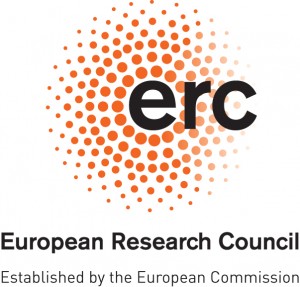 |
RG.BIO – Renormalization Group approach to the collective behaviour of strongly correlated biological systems |
| PI: A. Cavagna – 2018-2023 | |
| ERC – Advanced Grant. Biological systems displaying collective behaviour are characterized by strong spatio-temporal correlations, which partly transcend the multiform diversity of their microscopic details, much as it happens in statistical physics systems close to a critical point. Recent experiments show that collective biological systems conform to another hallmark of statistical physics, namely scaling. Scaling laws have been found to be valid both at the static and at the dynamic level, although with critical exponents unlike any known model. Building on the experimental evidence of strong correlations and scaling laws, I will develop a novel renormalization group (RG) approach to strongly correlated biological systems, with the purpose of classifying into new universality classes the collective phenomena of life. The key theoretical idea of the method is to perform an expansion around an equilibrium field theory in which the interaction network between the individuals in the group is fixed, and to assess the stability of the resulting RG fixed points with respect to weak off-equilibrium effects, complementing the RG flow with the standard loop expansion around the upper critical dimension. The renormalization group will allow us to go beyond the hydrodynamic regime of small fluctuations, thus pushing theoretical prediction into the critical region of the parameters, where the correlation length scales with the system’s size, a region experiments show to be inhabited by several biological systems. To define the starting field theory in the most economic way I will study the role of effective symmetries in giving rise to weakly conserved quantities and non-dissipative terms, and assess their stability under the RG flow. Finally, my lab will conduct new experimental campaigns on flocks (starlings, swifts), swarms (midges, mosquitoes) and cell colonies, to explore and test the new universality classes identified by the renormalization group approach. www.erc–rgbio.eu |
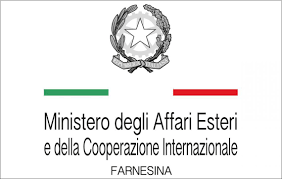 |
IDA-CREBS – Information Density Analysis of the Collective Response in Biological Systems |
| PI: A. Cavagna – 2018-2020 | |
| Collective behaviour in biological systems is the quintessential topic in complexity, being a rapidly growing field at the interface between biology, physics, engineering, math and computer science. Apart from its strong fundamental relevance, understanding collective behaviour in biological systems has crucial technological upshots, as we design artificial swarms whose distributed control strategies are inspired by natural systems. A key issue both at the biological and artificial level is that of understanding and controlling the collective response of the system under external perturbations, and in particular the natural trade-off between robustness and responsivity. Compared to physics, the experimental study of collective response in biological systems is forcibly limited by natural constraints, hence we cannot in general use the standard tools of statistical mechanics, such as fluctuation dissipation relations. The objective of the project is to introduce a new analytical measure of information density, which can detect order and structures even at the level of the individual configurations explored by a biological group following a perturbation. Information density will be computed on data of natural swarms of midges subject to external acoustic perturbations, to check what is the signature of collective response, with no need to select an appropriate observable conjugate to the specific perturbation. The results of the project will clarify how a biological system reorganizes after a perturbation in order to maintain robust cohesion, thus paving the way to controlling the collective behaviour and response of distributed artificial systems. IDA-CReBS is supported by MAECI Italian-Israeli Scientific Cooperation Project in collaboration with Technion – Israeli Institute of Technology in Haifa (co-P.I. Dov Levine). |
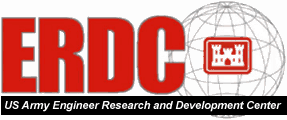 |
Understanding avian flocks near and entering civil infrastructure for species of concern |
| PI: S. Melillo – 2017-2021 | |
| Large numbers of active agents, or active matter, is one area of promising reserach in the quest for fundamental theories of the living world. Of particular interest are forms of active matter that exhibit properties at the group level not reflected at the scale of individual, constituent agents; for instance, a single cell or individual animal. We will use cutting-edge 4-D video tracking to analyze time-varying, 3-D active matter compose dog 6,000-16,000 Vaux’s swift (Chaetura vauxi) flocks, one of the fastest small birds, which are under attack by predatory birds. Our hypotheses are driven by the notion that the multiple phases exhibited by our active matter (e.g., disordered, ordered, miling, vacuolation) reflect evolved structural properties that maximize collective resilence at ow cost under changing external (e.g., predators [hawk and falcon]) and internal (e.g., roost goal-orientation) pressures. |
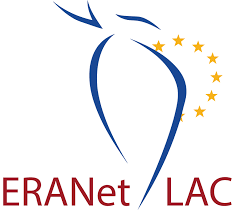 |
CRIB – Collective Response from Individual Behaviour in Groups and Ecosystems |
| PI: A. Cavagna – 2017-2019 | |
| Ecosystems are under pressure by global environmental changes and in no other case as in tropical rainforests. In this context it is essential to develop theoretical and modeling tools that can analyze empirical data and predict how ecosystems respond to changes. Ecosystems however are large heterogeneous aggregates of interacting individuals belonging to different species so that a global predictive analysis is very difficult. Progress, though, can be made once we realize that ecosystems are not chaotic structures but rather they are organized into smaller scale homogeneous collective units of single species individuals; these units interact with each other and contribute to ecosystems global response to environmental stimuli. The project aims at developing an integrated approach to the study of ecosystems’ response in the face of global changes through the understanding of how the single-species homogeneous group level behaviour scales up to the multi-species heterogeneous ecosystem level. To achieve this the project will use both experimental data and mathematical models focusing on the key concepts of criticality, tipping points and across-system information transfer. |
 |
PROCEEDS – Probing Complex Dynamical Structures in Three Dimensions |
| PI: I. Giardina – 2016-2018 | |
| ERC – Proof of Concept. Despite the recent expansion and enormous potential of 3D microscopy and 3D scanning, these technologies currently suffer from two limitations: i) lack of unity: although both technologies aim to unveil the 3D features of a system, they are being developed completely independently, resulting in lower flexibility and higher costs; ii) lack of dynamics: today these technologies can barely be applied to fast moving systems; however, crucial microscopic traits are dynamical, and key industrial features as structural deformation, shear and stress, are induced by motion itself. PROCEEDS will exploit the knowledge developed within the ERC project SWARM to explore the industrial potential of a platform that unifies 3D microscopy and 3D scanning under a single dynamical framework. SWARM developed a new powerful tracking algorithm capable of reconstructing the 3D dynamical trajectories of particles within large and dense moving swarms. In the industrial context, a `swarm’ is either formed by the actual constituents of the system (as the organelles within a cell), or by the virtual tracers used to probe the system (as the reflective spots cast on a moving body). PROCEEDS will use the code developed by SWARM as a unifying platform for developing 3D dynamical microscopy – tracking actual swarms – and 3D dynamical scanning – tracking virtual swarms. Accordingly, PROCEEDS will test two commercialization paths: 1) 3DMICRO: a tracking software for the control of multi-camera microscopes, providing the reconstruction of the 3D trajectories of microorganisms and colloidal particles, with impact on the health, processing and food industry. 2) DYSCAN: a new, non-invasive and accurate 3D scanning method of fast moving bodies, which turns swarms of passive tracers into distributed clouds of virtual accelerometers, thus measuring deformation, stress and vibration of structures under heavy dynamic loads, with impact on machine monitoring in energy, automotive and transportation industry. |
 |
SWARM – Empirical analysis and theoretical modelling of self-organized collective behaviour on three-dimensions: from insect swarms and bird flocks to new schemes of distributed coordination |
| PI: I. Giardina – 2010-2015 | |
| ERC – Starting Grant. Animal groups represent paradigmatic cases of self-organized collective behaviour, where global coordination arises from local rules of interaction between individuals. A major issue, both for theoretical studies and technological applications, is to understand how self-organization emerges within a system with distributed intelligence. SWARM aims at providing new knowledge about self-organization and collective behaviour in 3D animal aggregations.To do that, SWARM will export concepts and methods from physics, and will integrate empirical work, data analysis and theoretical modelling. In particular SWARM will:i)perform field experiments on large insect swarma and bird folcks and retrieve individual 3D coordinates and trajectories.ii)perform a statistical characterization of swarming/flocking behaviour; obtain information on the interactions between group members, and on the followed by individuals. iii) develop empirically based models of 3D animal collective behaviour and design efficient, biologically inspired, algorithms of distributed coordination. |
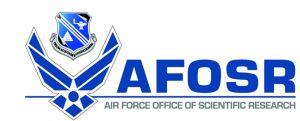 |
PANES – Three-dimensional reconstruction of individual trajectories within bird flocks and insect swarms |
| PI: A. Cavagna – 2010-2014 | |
| The objective of this research is to uncover the fundamental principles and algorithms that govern collective phenomena in three dimension (3D) exhibited across many species in nature with a view towrds exploiting the resulting understandin as codified in models and algorithmsfor the purpose of design, implementation and verfication of robust, distributed cooperative survivable control systems for swarms of autonomous robots.Methods from computer vision will be used to gather empirical observations in 3D of swarms of birds and insects generating datasets to be subject to rigorous modeling and analysis. |
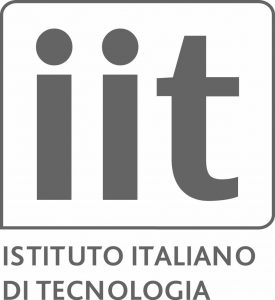 |
ART-SWARM – From self-organized animals groups to distributed artificial swarms: exporting natual behaviour ruels to mobile robotics |
| PI: I. Giardina – 2010-2014 | |
| The study of self-organization and collective behaviour encompasses fields as diverse as statistical physics, ethology, mathematical biology, control theory and cooperative robotics. Three-dimensional animal aggregations, as bird flocks, fish schools and insect swarms, provide wonderful examples of emergent self-organization. the major issue, both for theoretical stuides and tecnological applications, is to understand how self-organization emerges within a system with distrinuted intelligence. Several multi-agent models of flocking and swarming exist, which produce collective behaviour starting from simple rules followed by the individuals. Yet, due to the lack of 3D large-scale data, these models are hardly tested against quantitative observations. Moreover the rules of interaction among the agents are guessed on the basis of common sense, rather than being quantitatively modelled on empirical observations. This is a severe limit. In biological groups individual strategies are selected by evolution to achieve functioning and overall efficiency at collective level. Thus empirically based information on these strategies would not only lead to more appropriate models, but also help to design optimal control strategies in artificial systems. |
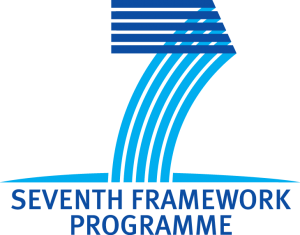 |
PASSAROLA – Statistical and dynamical analysis of collective behaviour in a three-dimensional motion: empirical studies and modeling |
| PI: I. Giardina – 2010-2012 | |
| Collective behaviour is ubiquitous in living systems such as flocks of birds, swarms of insects or schools of fishes. It occurs for several reasons which go from predator protection to mating. To better understand those living systems it is therefore important to understand how collective behaviour emerges and its features. For large flocks of birds and swarms of insects little work has been made from the perspective of empirical and statistical analysis towards modeling of different types. This proposal aims to make a comprehensive data acquisition of three-dimensional data of position and trajectories of elements in groups of flying animals for posterior statistical, dynamical and non-linear analysis characterisation and consequent modeling. It corresponds to the first broad approach to collective phenomena starting from measuring real features in order to reproduce them. |
